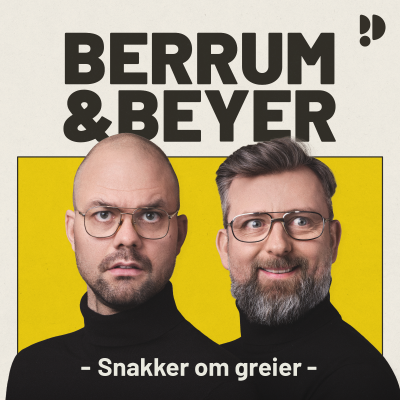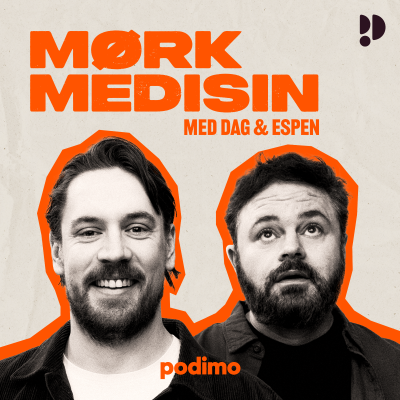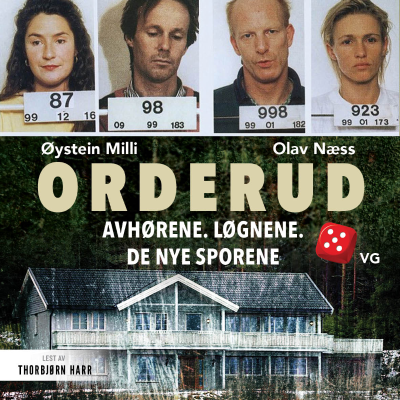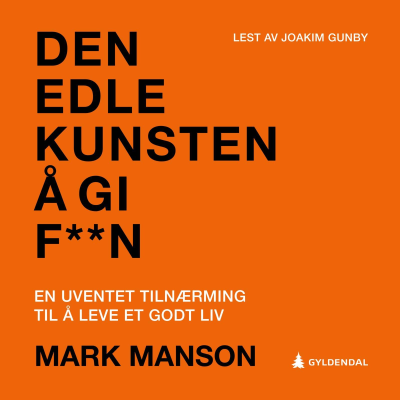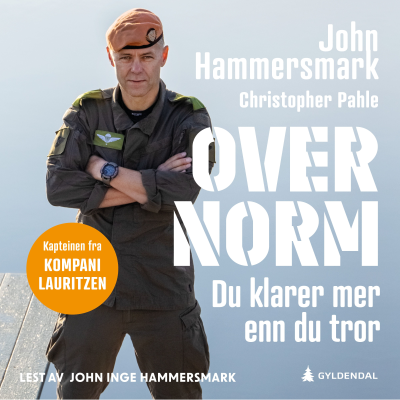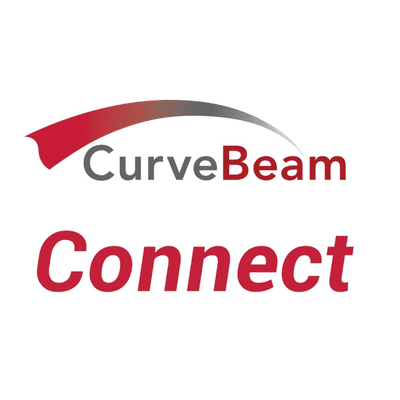
CurveBeam Connect Cast
Podkast av CurveBeam
Tidsbegrenset tilbud
1 Måned for 9 kr
Deretter 99 kr / MånedAvslutt når som helst.

Mer enn 1 million lyttere
Du vil elske Podimo, og du er ikke alene
Vurdert til 4,7 stjerner i App Store
Les mer CurveBeam Connect Cast
Welcome to CurveBeam Connect. Listen in monthly as we talk with doctors and experts in the field discussing innovations and insights into orthopedic imaging.
Alle episoder
23 EpisoderDr. Alireza Khosroabadi, DPM, opened the Khosroabadi Institute in Los Angeles, CA to shift his practice from general podiatry to surgical procedures. His minimally invasive bunion procedure has been featured on “The Doctors” television show. Dr. Khosroabadi spoke to CuveBeam’s Vinti Singh about his approach to bunion correction. Dr. Khosbroabadi started performing his trademarked AMI (advanced minimally invasive) about six years ago. “This procedure is similar to one common in Europe,” Dr. Khosbroabadi said. He refined it overtime, and can now perform the bunion correction in less than 25 minutes. AMI is a "true" minimally invasive procedure in that he makes three small stab incisions and an performs abductor release. He strives to realign the joint without removing any bone. In 98% of Dr. Khosroabadi’s patient’s cases, shaving the bone in the bunion down isn’t necessary. Dr. Khosroabadi invested in a state-of-the-art clinic and surgery center; which includes weight-bearing CT imaging. “All my patients, anyone going under the knife in my surgery center, gets weight-bearing CT imaging,” Dr. Khosroabadi said. “I felt the regular, 2D X-ray wasn’t good enough for me to assess everything that I wanted to assess. Also, it would take a little longer for me to obtain the images I wanted.” To learn more about Dr. Khosroabadi & the Khosroabadi Institute, visit https://www.877foot911.com/.
Dr. Selene Parekh, MD, MBA, wears several different hats in the orthopedic world. He’s a Foot & Ankle Specialist at Duke Health. He is known as “The Fantasy Doctor” in media circles, and he uses his data-driven insights and medical expertise to guide sports enthusiasts through the precarious world of sports injuries to make accurate predictions on how an athlete’s injury might impact their fantasy team. And, to top it off, Parekh brings his knowledge and insights of foot and ankle injuries to India, where his mission is to provide the latest techniques and best practices to the surgeons there. One area of orthopedic medicine that’s making a lot of progress these days, Parekh said, is 3D printing.
Dr. David Soomekh [https://marketscale.com/industries/contributors/dr-david-soomekh/] is a board-certified foot and ankle specialist and surgeon and founder of the Foot & Ankle Specialty Group in Beverly Hills, CA. Soomekh specializes in sports medicine and reconstructive foot and ankle surgery. He’s practiced foot and ankle medicine and surgery for the past 20 years, and his goal is to provide a one-stop-shop for patients from examination to diagnosis to treatment. To do that, Soomekh relies on on-site imaging and diagnostic equipment. “Everything is all here at the facility, so I can treat patients from A-Z,” Soomekh said. That includes a Cone Beam CT imaging system. “What’s the most important thing for a physician to decide is how a technology is going to change my practice in terms of how this will help the patient and help me guide them into a better diagnosis, which then leads to better treatment,” Soomekh said. The onset of COVID-19 provided an added benefit to having imaging equipment on-site by allowing for fewer patient appointments. “Patients are fearful of having to go to multiple places to have the various steps of the diagnosis process performed,” Sommekh said. “In my office, a patient is only coming for a foot and ankle issue. You’re not going to have a sick patient here waiting to get an MRI or a CT.”
Dr. Chris O’Grady [https://marketscale.com/industries/contributors/dr-chris-ogrady/] wants to see joints. The Florida-based Orthopedic Surgeon who specializes in shoulder reconstruction and replacement has experienced first-hand how helpful it is to have 3-D images when he prepares to perform a procedure. While O’Grady is much more familiar with shoulders than knees, he’s still excited to see Curvebeam’s [https://curvebeam.com/]upcoming entire lower extremity scanner, having seen how getting in-depth images before beginning a procedure can change the game. “I really learned the importance of [understanding] the three-dimensional glenoid or socket of the shoulder. Where things have advanced to now is that, for every single shoulder replacement that I do, the patient gets a CAT scan, the 3-D images are then put into this proprietary software that really quite literally allows me to do the surgery long before the patient ever gets to the operating room.” O’Grady has become an innovator in the robotic surgery space but said he still considers it more of a personal interest than something he frequently puts into practical application. Robotic surgeons coming close to the same level of their human counterparts are still a ways off, but there is still reason to be excited about innovations in technology, O’Grady said, especially as information is being shared more widely than ever. “What the future is going to allow are the surgeons that are kind of the onesy-twosy private practicing people in the middle of nowhere who don’t have the intricate systems that would allow them research assistance and all that sort of stuff, you might still have somebody there who does 1,000 knee replacements a year,” he said. “Well, now that person’s data will be able to get pooled into the ivory tower people running these massive studies that instead of having a few hundred patients can have tens of thousands of patients, involve many more surgeons and analyzing that data is very quickly going to solve some questions that I think people are still arguing on these podiums about.
Click here [https://issuu.com/azgroeninge/docs/ortho-nieuwsbrief_14/4] to view an article Dr. Vanrietvelde authored for his hospital newsletter to to educate orthopedic surgeons about weight bearing CT imaging. Belgian surgeons were beginning to utilize cone beam CT several years ago. Then, doctors like AZ Groeninge Kortrijk’s Dr. Frederik Vanrietvelde [https://marketscale.com/industries/contributors/frederik-vanrietvelde/] suddenly had to slow their use of the modality because of price concerns, with cone beam CT suddenly left off a crucial list made by legislators. Vanrietvelde and some colleagues lobbied to make sure it was included, noting that it met the definition of a CT scan approved for reimbursement by the government and that its absence was simply a mistake. “If you look very closely, you could tell cone beam CT also corresponds to these particular parameters they use, so it should have been on this list, anyway,” he said. “So, there was really no reason why it shouldn’t be on the list, and they really never argued that what we were asking was not correct. They simply said, ‘Sorry, we forgot it. We have to correct it.’” Even still, the process took two years for hospitals to once again be able to bill cone beam CT in the same way they were billing a more traditional CT scan. With that being the case, the numbers of Belgian doctors utilizing the technology remain relatively small. Still, Vanrietvelde is confident their numbers will grow now that the scans are more accessible, and he said the most important thing was to put himself into others’ shoes. “It’s always a difficult balance you have to do as a legislator. I’m thinking as a radiologist, and the patient is thinking as a patient. A legislator has to think as a legislator and think about budget balance, so my main advice would be come together,” he said. “Let’s get all those people together with different mindsets and different perspectives before you decide how to reimburse something.”

Vurdert til 4,7 stjerner i App Store
Tidsbegrenset tilbud
1 Måned for 9 kr
Deretter 99 kr / MånedAvslutt når som helst.
Eksklusive podkaster
Uten reklame
Gratis podkaster
Lydbøker
20 timer i måneden
